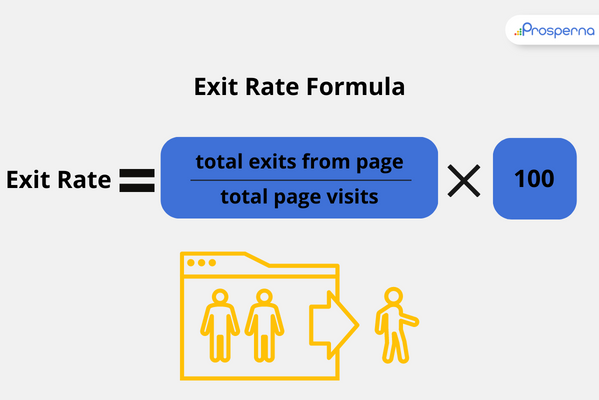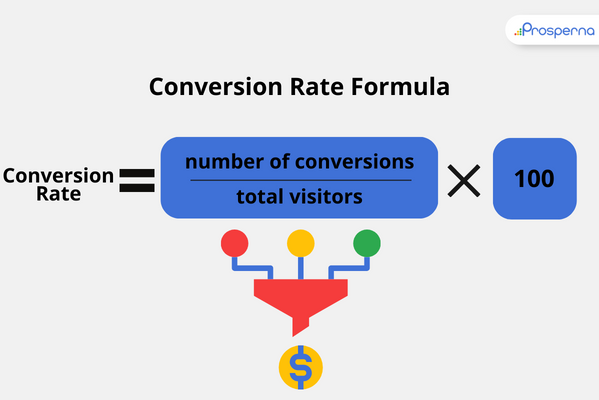As an online business owner, you may have wondered what digital marketing metrics you should measure—and how—to consider your business a success.
A good digital marketing strategy helps build strong brand awareness, but without proper measurement, there is no way to know whether your marketing strategies are successful or not.
As we all know, you can’t fix something if you don’t know what’s broken.
So, in this blog, we’ll discuss the 13 most important digital marketing metrics. These metrics are the fuel that powers your digital marketing strategy. When you know what to measure and how, you will be able to know how your digital marketing is doing.
What Are Digital Marketing Metrics?
Digital marketing metrics are quantitative measurements that help businesses track and evaluate the performance of their digital marketing campaigns and strategies.
These metrics provide insights into various aspects of a company’s online presence, such as website traffic, email, and social media marketing effectiveness.
Some examples of commonly used digital marketing metrics include website traffic, click-through rate, conversion rate, and bounce rate.
Why Is It Important to Measure Digital Marketing Metrics?
If you’re running a business today, there’s a good chance you’re using technology for sales, customer service, and marketing automation.
For every hour you spend on these tasks, there are 100 other companies that are doing the exact same thing.
This means that if you want to stand out and make more sales, you’ll need a clear understanding of how your business is performing in the digital world—and that comes through digital marketing metrics.
By measuring and analyzing digital marketing metrics, you can identify areas of your marketing strategy that need improvement. For example, a low conversion rate may indicate that changes need to be made to the website’s call-to-action (CTA) or checkout process.
Additionally, measuring metrics for digital marketing allows you to make data-driven decisions and optimize your campaigns accordingly for better results.
Also, knowing the key metrics for digital marketing allows you to track your progress over time and thus measure the return on investment (ROI) of your marketing campaigns.
13 Key Digital Marketing Metrics You Should Track
1. Website Traffic
Website traffic is a key metric for digital marketing that refers to the number of visitors that a website receives.
The more you drive traffic to your online store, the more opportunities you have to convert visitors into customers.
Here’s how you can track your website traffic:
- Google Analytics – it is a free web analytics service offered by Google that allows businesses to track website traffic, user behavior, and other metrics.
- Web server logs – some web servers keep log files of all requests made to the server, which can be analyzed to track website traffic. This is the most basic method of tracking website traffic but requires technical skills to extract and analyze the data.
- Paid tools – there are paid tools available like SEMrush, Ahrefs, and Moz that help to track website traffic and other metrics. This is usually used by companies that are running big websites.
2. Traffic From Channels
This digital marketing metric refers to the specific sources or platforms from which website visitors are coming.
Traffic from channels usually comes from these sources:
- Organic search – visitors who found the website through a search engine like Google, Bing, or Yahoo.
- Direct – visitors who typed the website’s URL directly into their browser, or who have the website bookmarked.
- Referral – visitors who were referred to the website by another website. This could be through a link on a blog or a social media post.
- Social media – visitors who came to the website through a social media platform, such as Facebook, Twitter, or LinkedIn.
- Paid search – visitors who came to the website through paid search ads, such as Google AdWords or Bing Ads.
- Email – visitors who came to the website through an email marketing campaign, such as a newsletter or promotional email.
Other traffic may also come from channels like display ads, affiliate marketing, or offline advertising.
3. Bounce Rate
This is a digital marketing metric that measures the percentage of visitors who leave a website after only viewing one page.
A high bounce rate indicates that many visitors are leaving the website quickly, often without interacting with the content or taking any desired actions.
Here are some reasons why your website might have a high bounce rate:
- Poor website design
- Slow page load time
- Misaligned expectations
- Irrelevant or low-quality content
- Incorrect targeting
A high bounce rate is not always a bad thing, though. For example, it could indicate that visitors are finding the information they need—which is the desired outcome—and are leaving the site.
4. Exit Rate
This is a digital marketing metric used in website analytics that measures the percentage of visitors who leave a website from a specific page rather than continuing to view other pages on the site.

For example, if a website receives 1,000 visitors in a given period of time, and 100 of those visitors leave the website after viewing a specific page, the exit rate for that page would be 10%.
Exit rate can be used to identify problem areas on your website, such as pages with high bounce rates or low engagement.
It can be used in combination with other metrics, such as time on page, bounce rate, and conversion rate, to gain a more comprehensive understanding of how visitors interact with your website.
5. Conversions
The conversion rate is a digital marketing metric that measures the percentage of website visitors who take a desired action, such as making a purchase, filling out a form, or signing up for a newsletter.
It is a key metric for digital marketing because it helps businesses understand how well their website is converting visitors into customers.

For example, if your online store receives 1,000 visitors and 50 of them make a purchase, the conversion rate would be 5%.
6. Click-Through Rates
Click-through rate (CTR) is a digital marketing metric that measures the effectiveness of online advertising by calculating the number of clicks on an ad divided by the number of times the ad is shown (impressions).

For example, if an ad receives 1,000 impressions and 100 clicks, the CTR would be 10%.
A higher CTR shows that the ad is more successful in enticing users to click on it, whereas a lower CTR shows that the ad is not connecting with its target market.
By tracking the CTR of their ads, businesses can determine which ads are most effective at driving clicks and conversions and adjust their ad campaigns accordingly.
7. New Visitors Versus Returning Visitors
A website with a high number of returning visitors is usually an indicator that the website provides great value to its users through its content and overall user experience.
This means that people find the website useful and interesting enough to come back to it.
A low number of returning visitors may point to ineffective marketing efforts, a poor user experience, or uninteresting and irrelevant content.
On the other hand, a high number of new visitors can be a good indication that the website’s marketing efforts are reaching a broad audience. However, it could also mean that the website is new or that it’s a seasonal business and visitors come and go.
A low number of new visitors might mean that the website is focusing on a certain niche market and that its marketing efforts aren’t reaching a large enough audience.
8. Cost per Click
Cost per click (CPC) is a digital marketing metric that measures the cost of each click on an online ad.
The cost per click is determined by the advertiser and can vary depending on factors such as the competition for ad space, the relevance of the ad to the user, and the target audience of the ad.
It is commonly used in Pay Per Click (PPC) advertising platforms like Google Adwords, Bing Ads, and Facebook Ads.
9. Cost per Acquisition
Cost per acquisition (CPA) is a digital marketing metric that measures the cost of acquiring a new customer through advertising or marketing efforts.
Small and medium-sized businesses can use CPA to optimize their campaigns by focusing on strategies that lower the CPA, such as increasing the conversion rate, improving the targeting, or negotiating better ad rates.
10. Net Promoter Score
Net Promoter Score (NPS) is a key metric for digital marketing that measures the likelihood that a customer will recommend a company’s product or service to others.
The score is based on responses to a single question: “On a scale of 0 to 10, how likely are you to recommend this company’s product or service to a friend or colleague?”
Here are two types of customers based on NPS:
- Promoters – customers who respond with a score of 9 or 10 and are considered more likely to recommend your product or service to others.
- Detractors – customers who respond with a score of 0 to 7 and are considered less likely to recommend your product or service
NPS is widely used as a tool for measuring customer satisfaction and loyalty and is used by companies of all sizes and in all industries to gauge the effectiveness of their customer engagement and retention strategies.
11. Engagement Rate
Engagement rate is a digital marketing metric that measures the level of interaction and engagement that a piece of content, such as a social media post or video, receives from its audience.
The engagement rate is usually calculated by taking the number of likes, comments, shares, or other types of interactions on a post or video.
Engagement rate is an important metric for businesses and individuals who use social media platforms as a marketing or communication tool, as it allows them to identify which types of content are resonating most with their audience and create engaging social media posts.
12. Inbound Links to Website
Inbound links, also known as “backlinks,” are links that point to a website from other websites.
These links are considered important for search engine optimization (SEO) because they indicate to search engines that other sites consider the content on a website to be valuable and relevant.
Here are some backlink analysis tools you can use:
- Ahref
- Majestic
- Moz
- Google Search Console
The quality of inbound links is also an important factor that determines the ranking of a website in search results.
And links from high-authority, reputable websites are considered more valuable than links from low-quality or spammy websites.
13. Page Views
Page views, also known as page impressions, are a measure of the number of times a specific webpage on a website has been viewed by users and are used to measure the popularity and engagement of a website.
When a user requests a webpage by clicking a link, typing a URL into their browser, or using a bookmark, it counts as one page view.
If the same user requests the same page multiple times, it will be counted as multiple page views.
Take note that page views do not take into account the number of unique users that have viewed a page.
A unique user is someone who visits a website. For example, if one person visits a website 100 times in a day, it will be counted as 100 page views but only one unique user. To measure the number of unique users, you can use metrics like unique visitors or sessions.
FAQs
How do you choose the right KPIs for digital marketing?
When choosing a KPI, it is important to align it with your overall business goals and objectives. For example, if your goal is to increase website traffic, then website traffic, bounce rate, and time on site are appropriate KPIs to measure. If your goal is to increase sales, then conversion rate, revenue, and customer lifetime value are the appropriate KPIs to measure.
Final Thoughts
Digital marketing metrics are powerful tools that can help businesses make informed decisions, optimize their marketing efforts, and ultimately measure their success. However, it’s important to remember that different metrics will be more important for different businesses, depending on their industry, business model, and marketing goals.
Also, digital marketing metrics change over time, so it’s important to continuously monitor and analyze the metrics to understand how they change and make necessary adjustments.
By tracking and analyzing the right metrics, your online business can improve its ROI and achieve its marketing goals.
Further reading:
Prosperna, Your Partner to eCommerce Success
Prosperna is an all-in-one eCommerce platform for Philippine businesses. We are on a mission to empower 100,000 Philippine MSMEs with simple and affordable eCommerce solutions.
In fact, we are super passionate about helping Philippine MSMEs we’re giving you a free account forever!
Want to analyze various digital marketing metrics? Create your free-forever Prosperna account now.




